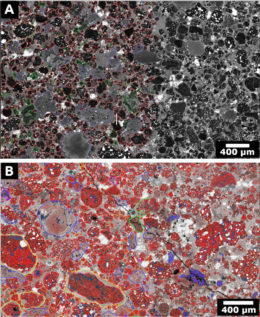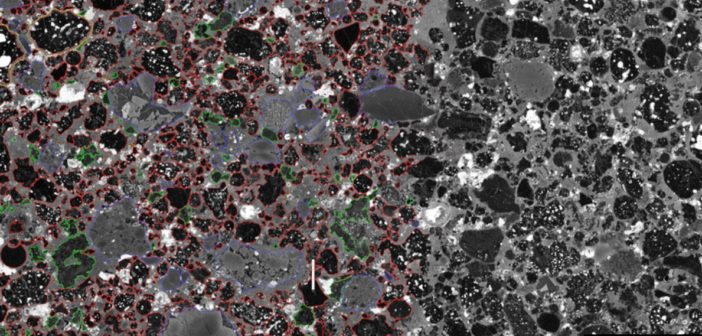
The interior structure of two carbonaceous chondrites: meteorite Los Vientos 123 (top) and meteorite El Médano 463 (bottom). Click to enlarge. [Pinto et al. 2021]
Have you ever wanted to look inside an asteroid? Today’s image (see the full version to the right) shows the interior structure of a type of meteorite called a carbonaceous chondrite — a remnant of a rocky, carbon-containing asteroid thought to have formed far from the Sun early in solar system history. A team led by Gabriel Pinto (Université de Lorraine, France) determined the composition of several carbonaceous chondrites by bombarding them with high-energy electrons and measuring the electrons that bounced back (top panel; meteorite Los Vientos 123) or the X-rays that were emitted (bottom panel; meteorite El Médano 463). The shading colors in the bottom panel indicate the chemical element, while the outline colors in both panels indicate the component type — for example, iron-oxide-rich components that formed in a high-temperature environment are outlined in blue. The authors found that the sizes and types of components in these meteorites support the theory that planetesimals formed via gravitational collapse of clumps of small particles. For more information, check out the article below!
Citation
“Constraints on Planetesimal Accretion Inferred from Particle-size Distribution in CO Chondrites,” Gabriel A. Pinto et al 2021 ApJL 917 L25. doi:10.3847/2041-8213/ac17f2

